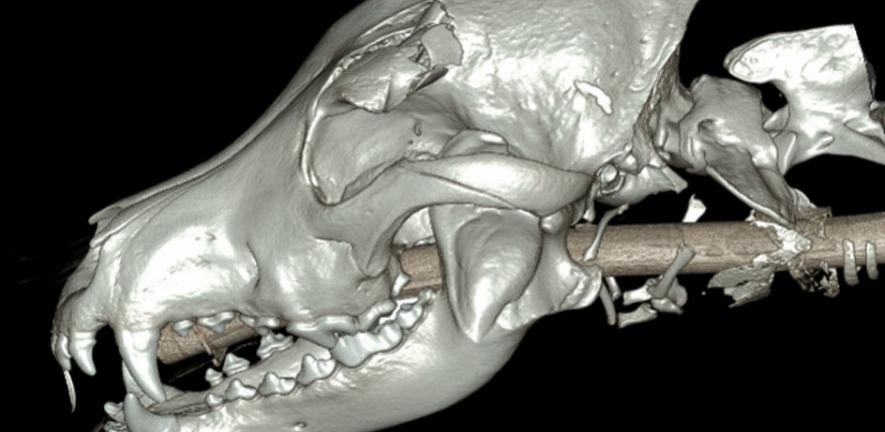
Police dog ‘Obi’ treated by Queen’s Veterinary School Hospital, University of Cambridge using their new scanner
Police dog ‘Obi’ treated by Queen’s Veterinary School Hospital, University of Cambridge using their new scanner
While at work, Obi was hit on the head by a brick thrown by a rioter and suffered a bone injury to his skull.
The police dog named ‘Obi’, who was struck on the head with a brick during the London riots, was recently treated at The Queen’s Veterinary School Hospital, at the University of Cambridge.
Around 40 dogs were used by the police during the London riots last week to help control crowds and support officers in potentially dangerous situations. Obi, a three-year-old German shepherd, was deployed on the front line in Tottenham on the night of Saturday, 6 August.
While at work, Obi was hit on the head by a brick thrown by a rioter and suffered a bone injury to his skull. He underwent emergency treatment at Mandeville Veterinary Hospital, but was then referred to Queen’s Veterinary School Hospital in Cambridge for a CT scan of his skull.
Under the direction of veterinary surgeon Graham Hayes, he received specialist diagnostic investigation of his injuries. The equipment used was a brand new Toshiba CT system installed by Cambridge Radiology Referrals earlier this year.
Under a light anaesthetic, the CT scanner was used to take several detailed pictures of Obi’s skull: these were then re-constructed to create a 3 dimensional image of his head injury, pictured. The image clearly shows the impact site of the brick and surrounding bone damage, but thankfully there is no evidence of gross haemorrhage around the brain or fractures of the brain case.
Veterinary surgeons are confident that Obi will make a full recovery over the next few months.
Obi resides in West Drayton in north-west London, and is one of almost 400 dogs used by the Metropolitan Police to combat crime. Approximately half are used in police operations, including incidents of disorder such as the riots. A small number are trained in detection, such as searching for explosives or narcotics.
This work is licensed under a Creative Commons Licence. If you use this content on your site please link back to this page.

